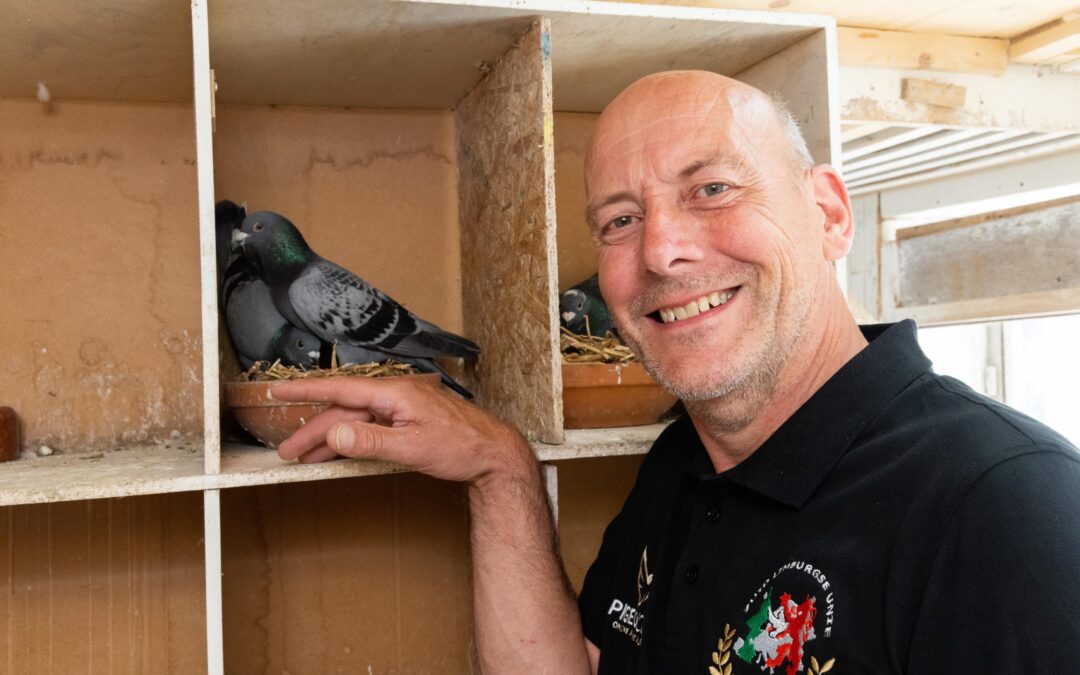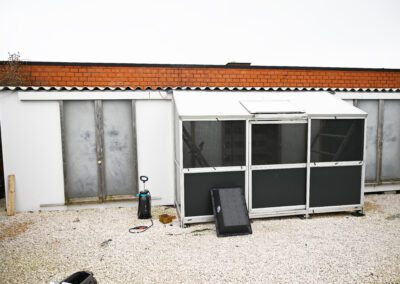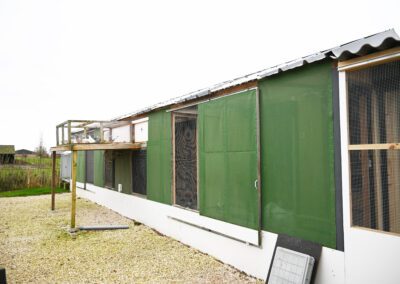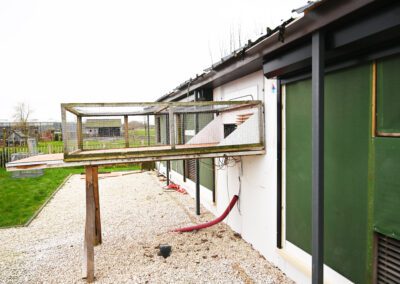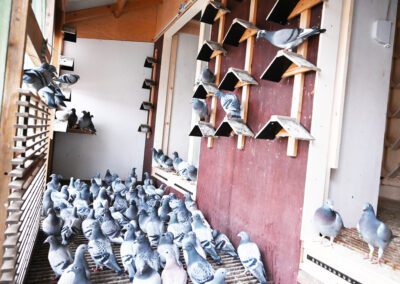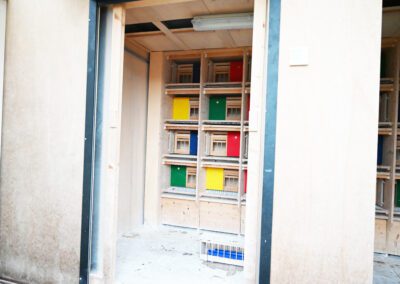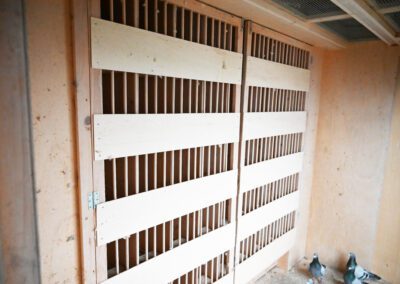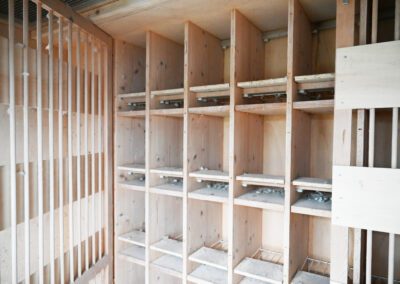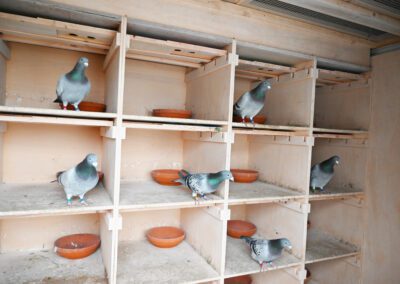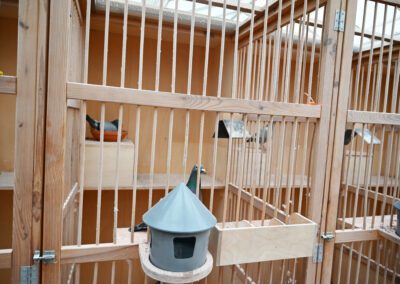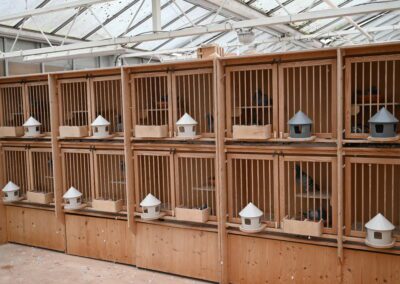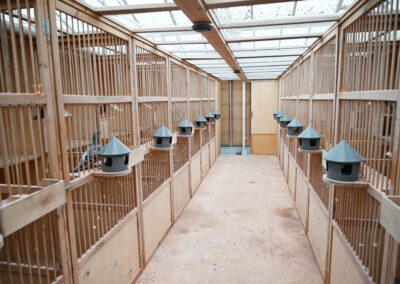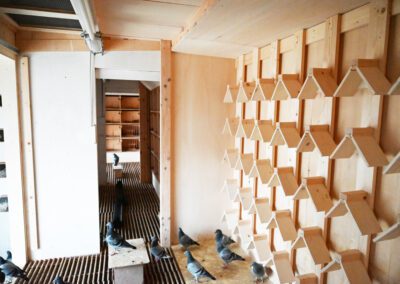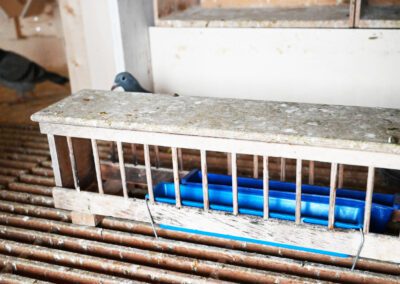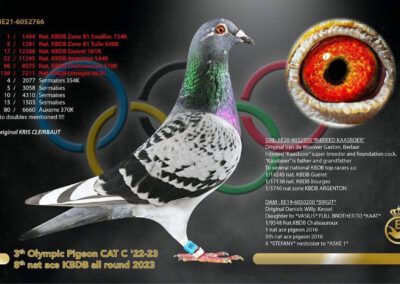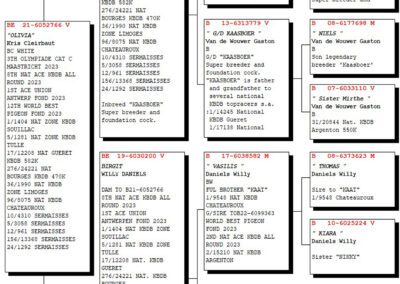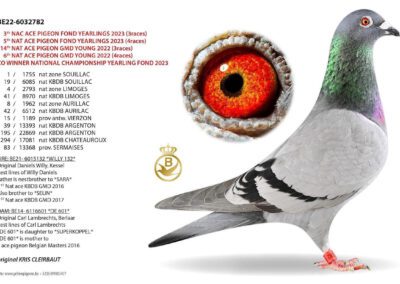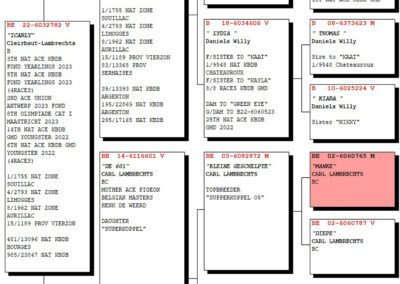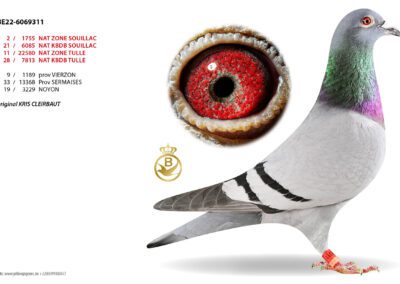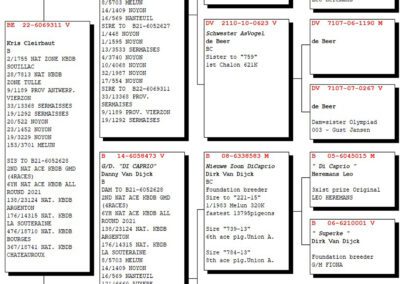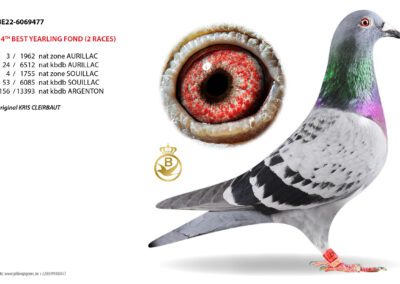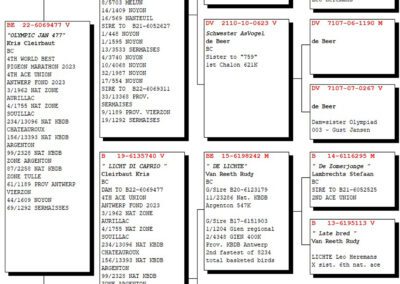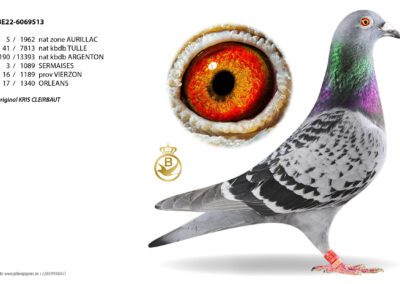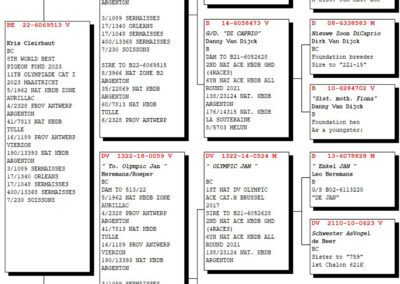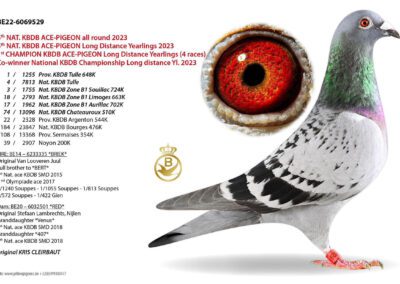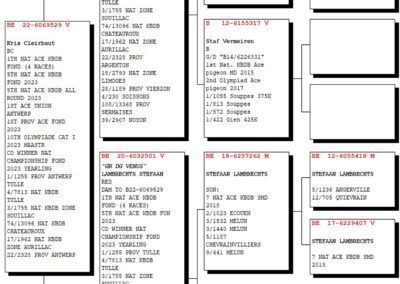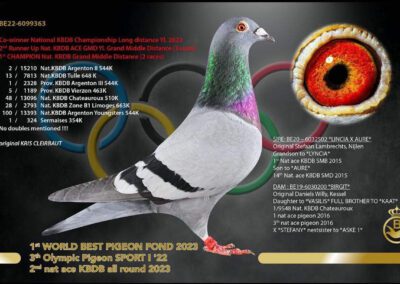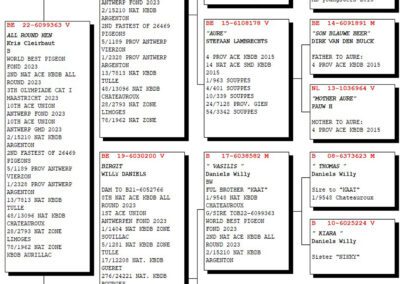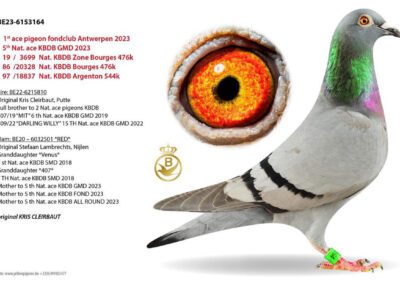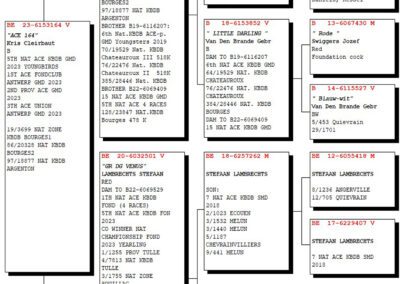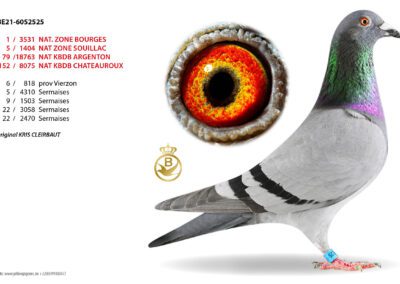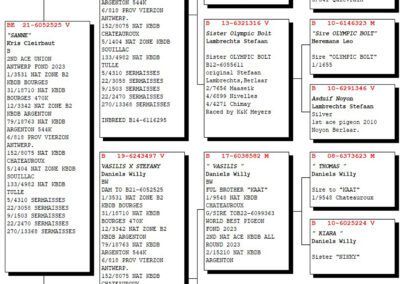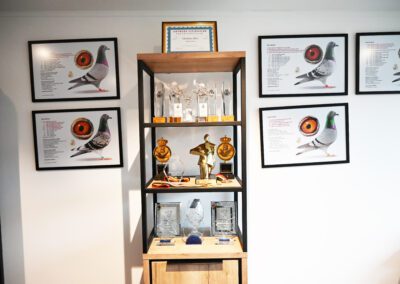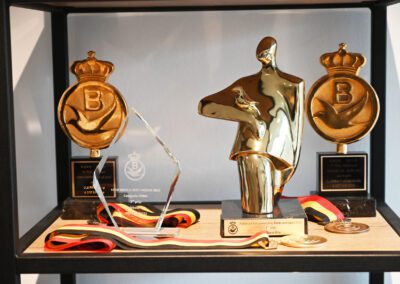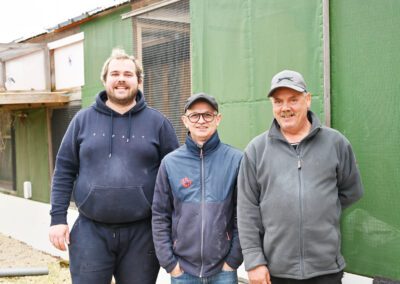In recent years, the release of the pigeons in Pau on the scheduled Fridays was more often postponed due to bad weather conditions in the Pau area. They also switched to a release point elsewhere in the south of France. In 2021, for example, they diverted to Mont de Marsan and last year to Bordeaux in the west. This somewhat detracts from the classic Pau which has world fame after all. Last winter, organizer Colombe Joyeuse in Brussels had deliberately decided to opt for a new unloading point which is located a bit more north-east of Pau, in the hope of avoiding the bad weather that was more common in the old area. A choice was made for the very suitable venue namely at the l’Hippodrome du Pont-Long located in Pau in the Pyrénées-Atlantiques. This international racecourse has a length of 865 meters and in the area around it no obstacles such as tall trees and/or power lines. In fact, this is ideal for unloading there.
In addition, the ZLU board spent a lot of hours making all the preparations to ensure all the work around the national/international ZLU flights runs smoothly.
This year, the preparatory flights for the marathon flights, such as this one from the national/international ZLU long distance program, were on the tough side. It was a difficult start with postponed and cancelled flights, then weekly flights with north-east winds and later summer temperatures. Then the kilometers home started to count more heavily.
In 2022, 15,436 pigeons participated in the international competition and were basketed by six countries. England and also Luxembourg, after a year of absence (a.o. Corona), were again present.
Unfortunately, this year we see that almost all participating countries had fewer pigeons in their baskets. There was a decline between 17 and 21% but with an exception for England, where 122 more participated in this classic. Internationally, this meant 2,905 pigeons less in the race. Internationally there are now 12,631 pigeons in competition.
The number of pigeons participating in the Netherlands was 1001 less than last year.
This year 3,934 pigeons entered the baskets. The last 10 years we saw a clear increase in participation in this international competition. So, unfortunately this year there was a significant decline.
Friday morning (23 June) there was low clouds with fog in Pau and the surrounding area. Unfortunately, it was not possible to release the pigeons early that morning, so unloading was postponed to Saturday. The forecast for Saturday and Sunday were better.
On Saturday at the release point there were no clouds and almost no wind with a temperature of and around 16°C. On the flight line, no clouds and a weak wind, mostly northeast. The temperature would rise to 28 °C in the afternoon. It was decided to unload at 7.20 am.
By the evening hours, the Pc’s, Laptops and I-Phones etc. were switched on again to see the first arrivals in France on the Pipa site and to follow their progress. These first arrivals give an indication of when pigeons can be expected in the other countries. After a first arrival, the excitement then starts to build. Who takes an early pigeon where or perhaps the national/international win….
A wrong notification appeared on the “Entries” on PIPA just after 5.30pm and was later removed. In many places, hearts were racing by then.
Then anyway, a quarter to 8pm the first notification appeared. The well-known fancier from Rollot (dept. Somme) n.l. Gerard Ledoux clocked two pigeons at 19.43 at a distance of 733 km. This gave both of them an average speed of 986 m/min. A little later two reports followed from Philippe Bazille from Ailly le Haut Clocher. This one picked up a pigeon at 771 km at 19.44 and 19.51 and this would give speeds of 1036 and 1026 m/min. The fastest pigeon in France was clocked by Noyelle Hervé from Preures at 821 km at a speed of 1044 m/min.
The first Belgian pigeon was reported by Christian Cuvelier from Tournai a town on the Scheldt in the province of Hainaut. She was reported at 21:38 at a distance of 658 km. Speed 997 m/min.
Also from England came a report from well-known fund player Mark Gilbert from Winkfield. He clocked his pigeon at 21.45 at a distance of 902 km. Speed 1041 m/min.
A total of 215 pigeons arrived on the first day of flying, of which 18 were reported from Belgium and 2 from Great Brittany. In Germany, it was Freialdenhofen and Sons from Aldenhofen who clocked the first pigeon Sunday morning at 8.06 am at 981 km, speed 871 m/min. Luxembourg followed with Humbberto Alves who clocked Sunday morning at 8.56 am at 861 km, Speed 732 m/min.
Unfortunately, clocking pigeons in the Netherlands on the first flight day proved impossible. So it became Sunday morning to see the first notification from the Netherlands appear on the ZLU notification list. And this one came from Strijen in South Holland. At 5.04.57, the widely known long distance fancier Ad Fortuin saw his first-signed “Joep” land on the flap. He had covered the distance of 1004 km at an average speed of 1062 m/min. Good for national and international victory!!!
Early rise
On Saturday evening, Ad soon realized that no pigeons would arrive in the Netherlands and certainly not on the further distances. Nevertheless, he and his wife Willeke stayed on the terrace enjoying coffee and soft drinks. He stayed outside until 11pm. He then left a lamp burning in the garden to illuminate the area should a pigeon fly through in the night. The flaps remained open and the system on.
Ad knows better than anyone that on the second flight day the first pigeons can take to the wing very early. On Sunday morning, he was therefore already present on the pigeon square at 5 o’clock and walked towards the loft. At the loft, he was passed by a pigeon which ran in so fast that Ad did not recognize it. Looking at the system he saw that it was “Joep”. Unfortunately, Ad had not seen him coming.
In the NIC nobody could be reached that early so he had to call privately to report. Then he could sit back and enjoy the other arrivals, with in his mind the thought of “sitting very early”.
Ad had basketed 13 two-year old nestlings for this first ZLU marathon at the NIC in Klaaswaal. This team consisted of 8 cocks and 5 hens. Of the 8 cocks, the hens of 4 cocks were also basketed. These 4 couples were on a young of about 3 to 4 days. The other 4 cocks were on a young of about 14 days. Of these, the hen stayed at home.
After the first arrival at 5.04, he clocked at 8.04, 9.26, 9.33, 10.06, 11.24 and 11.31 and are listed as 1-51-277-297-438-786 and 816 on the report list. They were 3 cocks and 4 hens.
The “Joep” wins 1st National and 1st International Pau
The cock which produced this masterpiece bears the name “Joep”, named after a nephew. He was basketed on a youngster about 3 to 4 days old.
His hen is “Yfke” and was Ad’s second arrival (51st Nat.). “Yfke” already flew a 1st Narbonne Sector 2 (1981 d) last year and was 3rd National (6261 d).
“Joep” was not at his trial and last year won 3rd Nat Bergerac S2 (5655 d) – 27th Nat Bergerac (25618 d) and 159th Nat Agen yearlings (6174 d).
His sire is the “371” from ’19 aka “Son Loyd” and a pure Batenburg-van de Merwe
Gr. sire. “Loyd”, from Team de Jaeger. Winner 1st International Barcelona 2018 (15,707 d). Golden Wing winner and Euro Diamond winner
Gr. dam is “Dena”, Batenburg-van de Merwe and a daughter of “Sumerian Fighter” 1st Int. Barcelona 2017.
His dam is the “277” of ’20. Batenburg-v.d. Merwe.
Gr. sire “New Laureate” PEC/Batenburg-v.d. Merwe. 1st Intern. Barcelona 2012.
Gr. dam is “”Nationalke Agen” 1st Int. Agen 2017 (13189 d).
After this power explosion, he will move to Hugo Batenburg’s breeding loft as “Lord New Laureaat”.
See also pedigree card.
A rich honors list on the ZLU flights.
After entering the long distance world IN 2012, Ad won 1st national Agen in 2018 in the yearlings with “New Miss Laureaat” sourced from Batenburg-v.d. Merwe. And we had the pleasure of interviewing Ad in 2019 when he managed to win both 1st National (2692 d) and 1st International St Vincent (10597 d) with nest hen “Willeke”. She descended from “Golden Monar Boy” a co-breeding with Etienne Meirlaen Deurne/Batenburg-v.d. Merwe. (Line Monar and Wittenbuik).
Her mother “Yvette” was also a co-breeder with Etienne Meirlaen/Batenburg-v.d. Merwe (line Bonte Narbonne and Montali).
And last year, Ad won National Perpignan with “Mels”, also a pure Batenburg-v.d. Merwe. Father is a son of the aforementioned “Willeke” and mother is “Miss Urk” sired by Pieter Woord and Louw van de Berg from Urk (out of the two international winners Perpignan (2017) and Pau (2018)).
In addition, Ad won 1st Narbonne in Sector 2 (1981 d) and was 3rd National (6261 d) with nest hen “Yfke”, out of son “Special One” (Batenburg-v.d. Merwe) x daughter “New Laureate”. And on Marseille, Ad became the Grand Master of the flight. Then he took five 1:10 prizes out of 8 stakes against 3312 pigeons. On St Vincent NPO last June 16, Ad became the Grandmaster Sector 2 with a 5 out of 5 result.
The list of regional, national and international top prizes has almost become a book by now.
Pit installation at the Kooilandsedijk
In the garden at the Kooilandsedijk, Ad built his breeding and racing lofts on his “Ad Fortuin square”. A stone loft with three departments. Two departments house only 9 couples of racers this year and the third department of this loft houses the 60 or so youngsters. Then a second loft in the barn which also consists of three sections. On the left are 12 couples of over-age pigeons which will soon fly Agen and Barcelona. In the middle there are 6 couples of breeders and the right-hand section is for about 30 couples of yearlings and some single pigeons. Agen will be their first long distance assignment.
Simple care
Pigeon fanciers from Strijen ensured that a new star appeared in the pigeon firmament. First, Ad competed in the program flights and in 2012, partly due to the efforts of Hugo Batenburg and Jaap van der Velden, he started concentrating on the long-distance flights, with an emphasis on the ZLU flights.
He has a busy job as a project manager and is often on the road. He also works part-time as Supply Agent for the Netherlands at PIPA. So the choice was made to take very simple care of his pigeon colony. Sometimes son Cas, or Hugo Batenburg or a club member lends a helping hand if Ad is unable to attend or goes on holiday. In the afternoon, around 5 pm, the youngsters are released. When the first marathon flights are approaching, all racers are released in the evening, starting an hour and a half before sunset. As the summer progresses, they go out earlier. A pigeon flyer helps to keep them in the air during training.
During the racing season, the racers have a full tank filled with Beyers’ Jellema mixture. After the flight a protein powder and two to three times a week Wonder Pigeon and sometimes Optima over the feed. A yellow cure he gives when they are on eggs. One week before the flight, he checks the pigeons for yellow using his own microscope. Once every six weeks, he visits the Göbel-van Sluis vet for a check-up.
Still the outhouse of Batenburg-v.d. Merwe
As is widely known, Ad Fortuin’s loft is populated with the best descendants from breeding and racing pigeons originating from Hugo Batenburg-v.d. Merwe of Klaaswaal. Every year, pairs of eggs are released from Hugo’s breeding and racing pigeons for further testing in Strijen. Ad then lays these eggs among breeding pairs. In the meantime, quite a few top pigeons have sprung from these eggs. And the topper then moves back to Klaaswaal to strengthen the breeding loft. As Hugo Batenburg held a general sale last year, Ad bred his own team of youngsters. He bred these from his 6 breeding couples and best racers. Eggs were laid for this purpose. In the coming years, pigeons will probably move again from Klaaswaal to Strijen.
